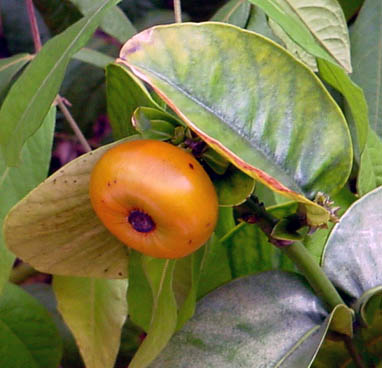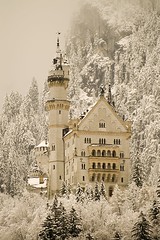
Ah, the mangosteen, the sweet sweet mangosteen (no relation to the mango). The Queen of fruits. This fruit is described as sweet and tangy, citrusy with peach flavor and texture. I've had it (canned), it's pretty delicious and definitely different. You can obtain canned mangosteen at many asian supermarkets nearby. It may even be possible to find fresh mangosteen in some asian markets but i've never seen it. In New York fresh fruits have gone for $45 a pound in some produce stores. It is very rare to find fresh mangosteen. So if you can ever get your hands on it, try it!.
Until recently it was completely unavailable in the States. It is a very tropical fruit and there were many restrictions on fruit imports from southeast asia where the mangosteen is native to. In 2006 Puerto Rico began sending mangosteen to some specialty food places in the US and in 2007 the ban on fruits without special preparation was removed allowing mangosteen and all its forms to be allowed into the states.
There is a legend that says that Queen Victoria had offered a reward to anyone that could bring the fruit back to her as the fruit itself had many legends behind it.
Because it is ultra tropical, it is nearly impossible to grow in the states. In it's native home, the tree can grow from 25 to 80 feet tall. What can be done though is to grow it in a greenhouse in Southern California. The mangosteen will surely die if it even spends a single night anywhere below 40 degrees F. Here in Pomona it's common to see nights down in the 30's in the winter. But with a green house some good design using passive radiant heating techniques could probably solve this problem.

There are also other types of mangosteen. The most popular is the purple mangosteen but there is also the lemon mangosteen, which is more citrusy in flavor and almost looks like a lemon (it's yellow) and also the button mangosteen. The lemon mangosteen is from South America instead of from asia and is described as a lemony cotton candy. The button mangosteen is described as having an almost tangerine like flavor. There are actually more types of mangosteens but it's hard to find much information on them. These two mangosteens can survive in temperatures down to 35 degrees, so i'll grow them in containers and at nights i'll bring them inside in the winter.

I have very young plants of both the lemon mangosteen and button mangosteen. I'm being very careful with these two as I've already accidently killed my jackfruit due to over watering. The button mangosteen is doing well, but the lemon mangosteen is going much slower, and I accidently burned part of one leaf. I'll need to make a small greenhouse out of the plastic bottles i've been collecting.








